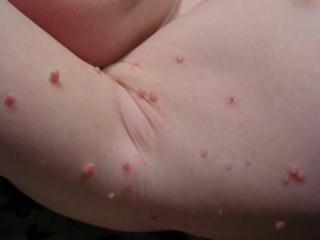During and after pregnancy, a woman’s body experiences considerable changes, notably in terms of hormones. Due to abrupt hormonal changes, melasma, dermatitis, acne, and other skin conditions are frequent during this time.
Melasma throughout and the following pregnancy
The body’s higher levels of the hormones progesterone and estrogen during pregnancy cause melasma. These hormones activate melanocytes, which results in skin discolorations. Melasma damages moms’ external beauty after giving birth, which makes them feel self-conscious. This problem gets worse in the sunlight. The sun’s intense rays trigger the melanocytes to create shade-producing melanin, which results in melasma. Therefore, moms should entirely avoid the sun even throughout pregnancy and after giving birth to prevent melasma. Melasma treatment using tri-luma cream. You should Tri Luma cream buy online, which is the ideal combination of three ingredients in the proper dosages and works exceptionally well to treat melasma.
There are a few melasma remedies that mothers can use as gentle skin care products as a consequence. This treatment can be carried out at home using exfoliating crystals to remove dead skin cells and a moisturizer to help hydrate the freshly regenerated skin. Bleaching agents are found in products on the market that are designed to make dark regions appear lighter. However, breastfeeding women must wait until their child has stopped nursing before using these products.
generalized dermatitis
Non-specific dermatitis, which can appear as red, flaky areas on the face, might be brought on by hormonal changes. Mothers can use products intended to treat rosacea that is also efficient in treating non-specific dermatitis to stop this. Alternately, choose a moisturizing product with sun protection, such as Eucerin Redness Relief Daily Perfecting Lotion, which is derived from licorice root and has an SPF of 15+ to help prevent damage.
For extreme flare-ups, consider using an anti-inflammatory medication like B.Kamins Chemist Booster Blue Rosacea Treatment, a topical cream that instantly decreases redness.
Web Angiomas
Spider angiomas cause small blood vessels to enlarge, which causes them to group very near to the skin’s surface and leave a red stain that resembles a web. This is because hormonal changes can lead to weight gain, increased pressure on the veins, and enlargement of the surface blood vessels in humans. Swollen blood vessels may go down three to six months after delivery. There are still some spider veins, though. A 1,064-nanometer laser beam is used in this procedure to quickly heat, coagulate, and break apart the cells as it travels through the skin.
Creams used topically cannot be used to treat this problem. Therefore, using concealer is the ideal solution if the issue is only temporary. Biological Forget It is a well-known concealer. Additionally, it contains vitamin E and glycerin to nourish and smooth the skin.
Acne
Elevated amounts of progesterone, which the body produces to maintain a healthy uterine lining during pregnancy, can result in increased oil output from the oil glands, sebum accumulation, and clogged pores that cause acne. Additionally, green tea peels help destroy bacteria and brighten the skin, while pumpkin peels help shed dead skin cells. Mothers should use products that are relaxing and have botanical elements like chamomile, lavender, etc. to alleviate typical skin issues that develop during pregnancy, like acne.
Women with sensitive skin or those who are nursing can treat skin outbreaks using a mild chemical. Look for items that contain sulfur, a naturally occurring element with healing-promoting antibacterial and anti-inflammatory qualities. After weaning, mothers can treat skin breakouts with more powerful ingredients like salicylic acid and benzoyl peroxide. Alternatively, you can use an at-home peel to hasten healing and lighten scarring during flare-ups with our adult acne intensive peel kit.
puffiness and shadows
Insufficient sleep after giving birth and hormonal changes can result in dark circles and puffiness. Mothers who frequently wake up to nurse their kids suffer from sleep deprivation, which results in dark circles beneath their eyes. Apply an eye cream or serum that has nourishing components like aloe and peptides to help reduce swelling.
Many doctors advise Kinerase Under Eye Rescue, which contains kinetin, aloe, and eyesore tetrapeptide, to lessen puffiness and the appearance of fine wrinkles. If you have dark circles beneath your eyes, try using a skin-lightening cream. Dove Energy Glow Brightening Eye Cream with SPF 8 improves dull skin because it is vitamin-rich.
You might not notice results from using an eye cream immediately away. Use a concealer designed specifically for this trouble area instead. Clinique About Eyes Concealer is a thin, emollient cream with several lightening benefits to combat darkness and an outstanding peptide mix to help reduce puffiness and agitation.
In other words, the skin problem will get worse as a result of the body’s abrupt hormonal changes that occur both during and after pregnancy. Additionally, moms are frequently strained and exhausted after giving birth, and hormonal imbalance generally results in alterations to the skin’s structure. Some of the most typical skin changes following childbirth are acne, stretch marks, pigmentation, and skin discoloration. To improve these situations, women should adopt a healthy lifestyle. However, for successful treatments, you should contact a doctor if you’ve experienced skin-related problems for a while.










